Visions GOURMANDES
Posted on by Wine & Food Society
Interview with Author, Photographer Philippe Germain
By: Publisher & Journalist Margaux Cintrano
Photo Copyright: Philippe Gеrmain, Visions Gourmandes
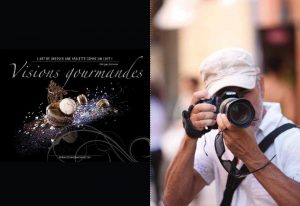 Margaux: Philippe, let´s start with a totally basic question, how do you write ? With a pen, with a pencil or via computer or mechanical pencil?
Margaux: Philippe, let´s start with a totally basic question, how do you write ? With a pen, with a pencil or via computer or mechanical pencil?
Philippe: Normally, I work with pencil and paper. But often enough, I can also work with a voice dictation recorder that automatically transcribes text on my computer.
Margaux: Tell us, about Visions Gourmandes. How did you create the concept ? What inspired your dedication to Visions Gourmandes ?
Philippe: This is certainly the most interesting question. It all started one 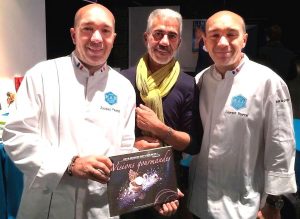 day when I was invited as a jury member of a culinary competition. The most interesting notation seemed to be the one concerning the presentation. So I wanted to document me and I desperately looked for a book relating the subject. Impossible to find, even in foreign language. It was at that moment that the idea of a reference work on straightening the plate was born.
day when I was invited as a jury member of a culinary competition. The most interesting notation seemed to be the one concerning the presentation. So I wanted to document me and I desperately looked for a book relating the subject. Impossible to find, even in foreign language. It was at that moment that the idea of a reference work on straightening the plate was born.
Margaux: What was the book writing process like ?
Philippe: I started writing the book in 2013. My plan was a simple idea: first, a theoretical and technical part of the concepts that make a dish 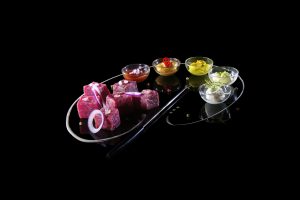 successful. Then the visual part with a number of culinary creations, each accompanied by a procedure for its implementation.
successful. Then the visual part with a number of culinary creations, each accompanied by a procedure for its implementation.
Margaux: What were the most challenging chapters in the book and why ?
Philippe: I wrote the first part of the book relatively quickly and rather easily because I mastered in the different aspects. What has been most difficult to achieve concerned the enforcement and the creation of all the original culinary works that are found in the book. My first idea was to use various professionals and 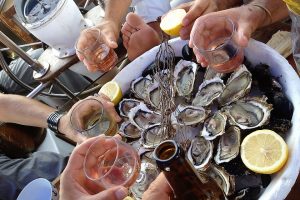 above all creative chefs to create the fifty plates. This proved impractical very quickly and logistically and impractical in my perspective. I had done a re think, and pondered on the idea, of catering schools and to have students work under my artistic direction with the help of their teachers. Again, the idea had proved too complicated to implement. After, I imagined get a group of culinary photographers who could serve as intermediaries between their clients and my idea of the book. Finally, I decided I had to perform all of the labors, and photograph the book myself, and all the works composed in
above all creative chefs to create the fifty plates. This proved impractical very quickly and logistically and impractical in my perspective. I had done a re think, and pondered on the idea, of catering schools and to have students work under my artistic direction with the help of their teachers. Again, the idea had proved too complicated to implement. After, I imagined get a group of culinary photographers who could serve as intermediaries between their clients and my idea of the book. Finally, I decided I had to perform all of the labors, and photograph the book myself, and all the works composed in 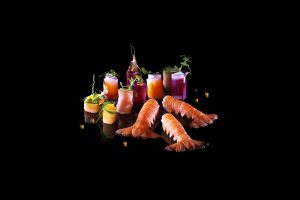 the book are mine and the illustrations are my mother´s.
the book are mine and the illustrations are my mother´s.
So that was the hardest part, but it was also the most interesting part in the realization of this book.
Margaux: Did you actually take notes prior to writing the book ? Did you write your thoughts down for the book during other professional activities ?
Philippe: No note taking. No thoughts collected over that period of time. The writing of the first part of the book was done in one go. Once the 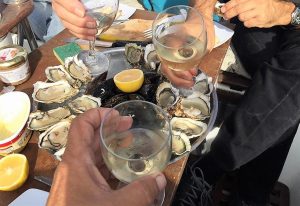 defined plan, it was relatively quick and easy to write all the chapters.
defined plan, it was relatively quick and easy to write all the chapters.
Margaux: When were your best writing moments, the early am or late at night ? Did you have a specific time period where the words seems to flow off the pen so to speak ?
Philippe: I had the chance to write the book in idyllic conditions rather because I was on a distant tropical island for a few months in the sun, especially in the morning, during the spring 2013. A judicious mix of documentation and reflections enabled me to write all the text in one go.
Margaux: Did you video tape the preparation of the dishes ?
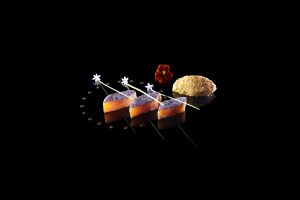 Philippe: Unfortunately I have no videos on the implementation of all my dishes. It was hard enough to coordinate the implementation and management of each photo in my creations. That said, it had seemed to me, quite interesting to imagine now, the achievement of pre-made dishes in the form of instructional videos.
Philippe: Unfortunately I have no videos on the implementation of all my dishes. It was hard enough to coordinate the implementation and management of each photo in my creations. That said, it had seemed to me, quite interesting to imagine now, the achievement of pre-made dishes in the form of instructional videos.
Margaux: Tell the audience about the dressage of the recipes in the book. Are these traditional turned modern recipes that you have collected ? Are these recipes from professional chefs ?
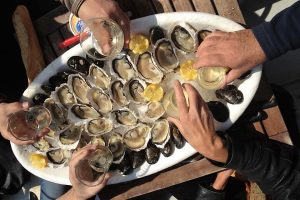 Philippe: All the achievements that you will find in the book are generally the fruit of my imagination. Some sources of information, some inspirational images, some variations, some rantings, many trials have led to the execution of a hundred flat. After final selection, it remained 63 that you can find in the book. The style of the presented are intentionally modern creations. Moreover, it is not a question really of recipes but rather procedures to present a beautiful plate. However, you can found all the ingredients that were used in the execution of each creation.
Philippe: All the achievements that you will find in the book are generally the fruit of my imagination. Some sources of information, some inspirational images, some variations, some rantings, many trials have led to the execution of a hundred flat. After final selection, it remained 63 that you can find in the book. The style of the presented are intentionally modern creations. Moreover, it is not a question really of recipes but rather procedures to present a beautiful plate. However, you can found all the ingredients that were used in the execution of each creation.
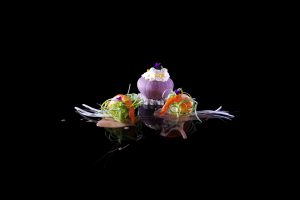 Margaux: Can we talk a little bit about the naming of the recipes ? What inspired these extraordinary names ? If this question is put to me, have you enjoyed all these titles ?
Margaux: Can we talk a little bit about the naming of the recipes ? What inspired these extraordinary names ? If this question is put to me, have you enjoyed all these titles ?
Philippe: In fact, I imagined relatively quickly, at a time when it was necessary to define the layout. At this point, I have not thought much about each title. I especially instinctively laid out what was going through my mind as what inspired me, of this or that dish.
Margaux: In 2013, prior to our meeting, I recall you mentioning that you were going to utilize some of the uncountable comments that have been 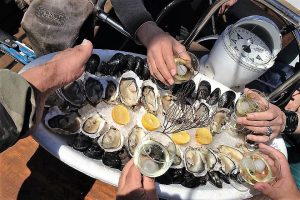 made online. Is there going to be a second book or a sequel to Visions Gourmandes ?
made online. Is there going to be a second book or a sequel to Visions Gourmandes ?
Philippe: In reality, because this book seems rather comprehensive, and I did not see how I could imagine a sequel. I could possibly add new creations under different themes, or write books for each theme, an artistic coordination with a creative professional chef. However, this would be a book rather than an expansion and not a sequel. I would prefer to direct training modules in videos. To continue this project, I rather would  organize Master Classes to help all cooking enthusiasts, professionals or amateurs, to create beautiful presentations of plates.
organize Master Classes to help all cooking enthusiasts, professionals or amateurs, to create beautiful presentations of plates.
Margaux: Can you tell us about the challenges that you had faced in the process of publishing a book of this nature, a first of its type ?
Philippe: I have already spoken of a first difficulty was to find who would create the dishes that make up the book. But more broadly, the challenge was to combine all the skills needed to produce a book.
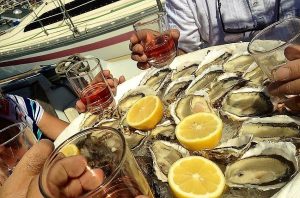 Fortunately, I was well surrounded by a few friends who had helped me by intervening in various parts of the book. Fortunately, my career has allowed me to calmly deal with all aspects of the realization and the production of the book, in particular concerning the photos, the computer part, the administrative part and thousands of other details because this book has been fully directed and financed at own expense, from design to distribution.
Fortunately, I was well surrounded by a few friends who had helped me by intervening in various parts of the book. Fortunately, my career has allowed me to calmly deal with all aspects of the realization and the production of the book, in particular concerning the photos, the computer part, the administrative part and thousands of other details because this book has been fully directed and financed at own expense, from design to distribution.
Margaux: How did you get yourself into the mental space required to write this kind of Professional Culinary Artist´s course, for lack of a 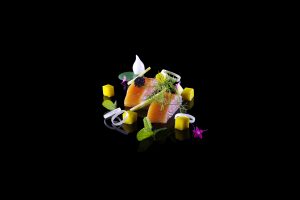 better word, to provide such a thorough and complete text on the art of plating ?
better word, to provide such a thorough and complete text on the art of plating ?
Philippe: It’s like having a child. It is the passion for one´s baby that gives all of us, the energy to move forward. Add to that a good dose of passion for the subject, and you will achieve this result very honorably, and be recognized as a success by all amateurs and professionals.
А ROSE, two GLASSES of Rosé – A FEAST from 117 years
Posted on by Wine & Food Society
By George Ganchev – Hedonique, Founder of Wine & Food Society
for Beyond Taste, Oltre Il Gusto – Magazine
Photo Copyright: Rosé Wine Expo, Wine & Food Society
31 May – 2 June – Kazanlak
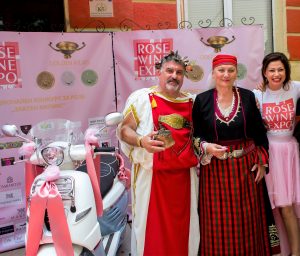 One rose, two roses, three roses – beauty; fragrance; a bouquet, at home or handed to a friend. Now imagine fields of roses, waves of fragrances and landscapes with beauties, handed by God to the people. This is the Valley of the Roses in Bulgaria or the Valley of the Thracian Kings, as it was understood from the modern archeology. You could read about the Thracians in „Iliad” and „Odyssey” of Homer, but where and how have lived their kings, you could see and feel only here. This is a horse /the fighters in those times/ people, for whose origin there are many versions: dated more than 8 000 years, the last genetic analyses demonstrated 90% match with the genes of the
One rose, two roses, three roses – beauty; fragrance; a bouquet, at home or handed to a friend. Now imagine fields of roses, waves of fragrances and landscapes with beauties, handed by God to the people. This is the Valley of the Roses in Bulgaria or the Valley of the Thracian Kings, as it was understood from the modern archeology. You could read about the Thracians in „Iliad” and „Odyssey” of Homer, but where and how have lived their kings, you could see and feel only here. This is a horse /the fighters in those times/ people, for whose origin there are many versions: dated more than 8 000 years, the last genetic analyses demonstrated 90% match with the genes of the 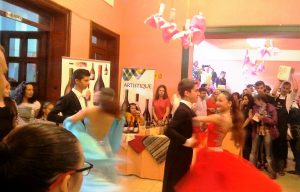 modern Bulgarians………Indisputable are the cult of the wine, as it is seen from the found gold vessels, and the cult of Orpheus… In their lands in the Middle Ages / there are different versions / has been transferred the Damask Rose – Rosa Damascena, from whose generations has been created a separate subspecies – the Kazanlak Rose, Rosa Kazanlika V. T. Kazanlak is the modern capital of the Rose valley, and the Thracian Sevtopolis is located at the bottom of a lake, an emanation of the “wild” socialist construction, 8 km from the city. Here you can find all possible dishes from river fish,
modern Bulgarians………Indisputable are the cult of the wine, as it is seen from the found gold vessels, and the cult of Orpheus… In their lands in the Middle Ages / there are different versions / has been transferred the Damask Rose – Rosa Damascena, from whose generations has been created a separate subspecies – the Kazanlak Rose, Rosa Kazanlika V. T. Kazanlak is the modern capital of the Rose valley, and the Thracian Sevtopolis is located at the bottom of a lake, an emanation of the “wild” socialist construction, 8 km from the city. Here you can find all possible dishes from river fish, 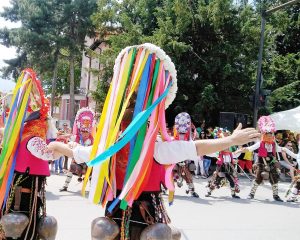 cooked great in the restaurants around the lake. As an indirect evidence for the genetic similarities between the Thracians / Orpheus / and the modern Bulgarians 117 years ago has been organized the first official celebration of the picking. A mystery that happens with the first rays of the sun, for which arrive guests from all over the planet. To become priests of the feast of perceptions, that befell the Rose –picker, to the ritual join Frenchmen, Germans, Britons, Italians and especially Japanese, who fly halfway around the world to be in this place at this time. Perhaps the genes are
cooked great in the restaurants around the lake. As an indirect evidence for the genetic similarities between the Thracians / Orpheus / and the modern Bulgarians 117 years ago has been organized the first official celebration of the picking. A mystery that happens with the first rays of the sun, for which arrive guests from all over the planet. To become priests of the feast of perceptions, that befell the Rose –picker, to the ritual join Frenchmen, Germans, Britons, Italians and especially Japanese, who fly halfway around the world to be in this place at this time. Perhaps the genes are  answered and Mrs. Anna Dundakov, who in 2010 organized the first edition of Rosé Wine Expo in Kazanlak, adding to the magic of the Queen of the Flowers that of the wine. Worldwide are organized forums of Rosé, including world ones, but nowhere Rosé doesn’t drink among fields of roses. Rosé Wine Expo – Kazanlak is the only one on the Balkans Wine Festival for Rosé. This is three-day wine fiesta in the spirit of Thracian mysteries with a lots of music, poetry and painting. Elite and Kraft wines, technological innovations and old practices and traditions, large and small wineries, well-established and wine-makers
answered and Mrs. Anna Dundakov, who in 2010 organized the first edition of Rosé Wine Expo in Kazanlak, adding to the magic of the Queen of the Flowers that of the wine. Worldwide are organized forums of Rosé, including world ones, but nowhere Rosé doesn’t drink among fields of roses. Rosé Wine Expo – Kazanlak is the only one on the Balkans Wine Festival for Rosé. This is three-day wine fiesta in the spirit of Thracian mysteries with a lots of music, poetry and painting. Elite and Kraft wines, technological innovations and old practices and traditions, large and small wineries, well-established and wine-makers 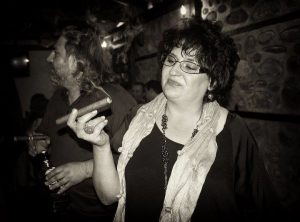 from all wine regions of Bulgaria. Every year from May 31 to June 2 is the National Competition for the Best Rosé Wine of Bulgaria “Golden Killix” and an annual meeting of wine judges, experts, journalists and designers, fashion coffees and visual artists. It left much to describe, but there is no way to tell what is happening. It can only be experienced. Rosé Wine Expo has all chances to become a global celebration of Rosé, the Festival of the Rose in Kazanlak is.
from all wine regions of Bulgaria. Every year from May 31 to June 2 is the National Competition for the Best Rosé Wine of Bulgaria “Golden Killix” and an annual meeting of wine judges, experts, journalists and designers, fashion coffees and visual artists. It left much to describe, but there is no way to tell what is happening. It can only be experienced. Rosé Wine Expo has all chances to become a global celebration of Rosé, the Festival of the Rose in Kazanlak is.
UP, up & AWAY with QUIQUE DACOSTA
Posted on by Wine & Food Society
Restaurant El Poblet, Centre Les Marines
Article By: Publisher & Journalist Margaux Cintrano
Photo Copyright: Quique Dacosta, Restaurant El Poblet
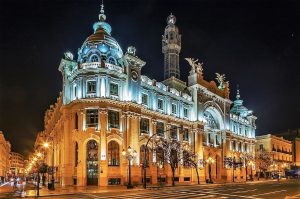 QUIQUE DACOSTA has been one of the sky rocketing new generation leaders of traditional Spanish vanguard signature cuisine in the last two decades, he has been experimenting and researching for example, the uses of aloe vera plants in their embryonic stages. He did not know if aloe vera was even edible at that point during its its development when he began his trials. He told me. It was simply a process of trial and error until he managed to create the delectably edible. His investigative spirit has earned him global recognition, a host of awards and numerous Michelin Stars. He totally
QUIQUE DACOSTA has been one of the sky rocketing new generation leaders of traditional Spanish vanguard signature cuisine in the last two decades, he has been experimenting and researching for example, the uses of aloe vera plants in their embryonic stages. He did not know if aloe vera was even edible at that point during its its development when he began his trials. He told me. It was simply a process of trial and error until he managed to create the delectably edible. His investigative spirit has earned him global recognition, a host of awards and numerous Michelin Stars. He totally 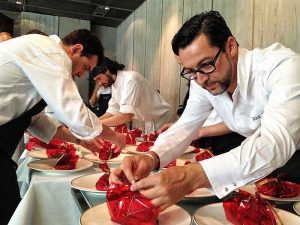 understands that Spain´s current status is not due to chance. He is part of the 4th generation of Spanish Chefs who embrace and expound gratitude for those who came before him. Being at the very pinnacle of the vanguard epicurean movement, he continues breaking free, without boundaries and his design aesthetics are all a part of Dacosta´s impeccably flawless creations, including his re-engineering and transformation of the live sensations and aromas of surf and turf, utilising the most cutting edge marvelous products to do so.
understands that Spain´s current status is not due to chance. He is part of the 4th generation of Spanish Chefs who embrace and expound gratitude for those who came before him. Being at the very pinnacle of the vanguard epicurean movement, he continues breaking free, without boundaries and his design aesthetics are all a part of Dacosta´s impeccably flawless creations, including his re-engineering and transformation of the live sensations and aromas of surf and turf, utilising the most cutting edge marvelous products to do so.
FACE TO FACE AT EL POBLET, DÉNIA, ALICANTE ..
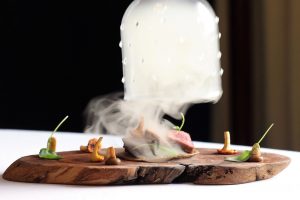 Margaux: Firstly, how would you describe your cuisine ?
Margaux: Firstly, how would you describe your cuisine ?
QD: Vanguard Spanish Cuisine.
Margaux: Can you tell us about your summer ingredients?
QD: Marine algaes, sea lettuces, sea urchins, albacore tuna, Dénia red prawns, almonds, oranges and embryonic vegetables.
Margaux: Tell us about the early stages of your career.
QD: By accident, I arrived in Dénia, from Jarandilla de La Vera, Extremadura, to spend a summer vacation when I was fourteen. I was terribly bored and did not know anybody. I decided to get a part time job 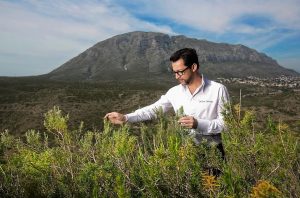 at the local Pizzeria. This had been my first contact with a restaurant. “It was not exactly a culinary position, however, it sparked the flames of culinary interest” ..
at the local Pizzeria. This had been my first contact with a restaurant. “It was not exactly a culinary position, however, it sparked the flames of culinary interest” ..
Margaux: Tell our readership about your palate.
QD: I do not have a favorite dish or preferred flavor. I like just about all and am extraordinarily flexible and open minded.
Margaux: Tell us about your Degustation Carte.
QD: The idea was initially very clear. I had reconstructed Montgo´s 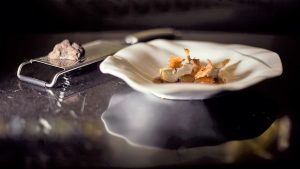 Nature Reserve, and the shore, that is to transform the live sensations utilising the extraordinary products and state of the art kitchen equipment.
Nature Reserve, and the shore, that is to transform the live sensations utilising the extraordinary products and state of the art kitchen equipment.
WUTTISAK WUTTIAMPORN, PROGRESSIVE Conceptual THAI food DESIGNER
Posted on by Wine & Food Society



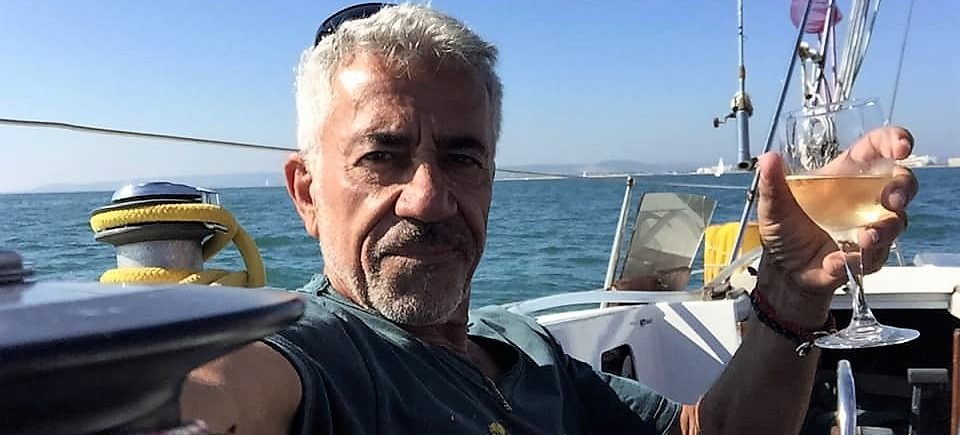
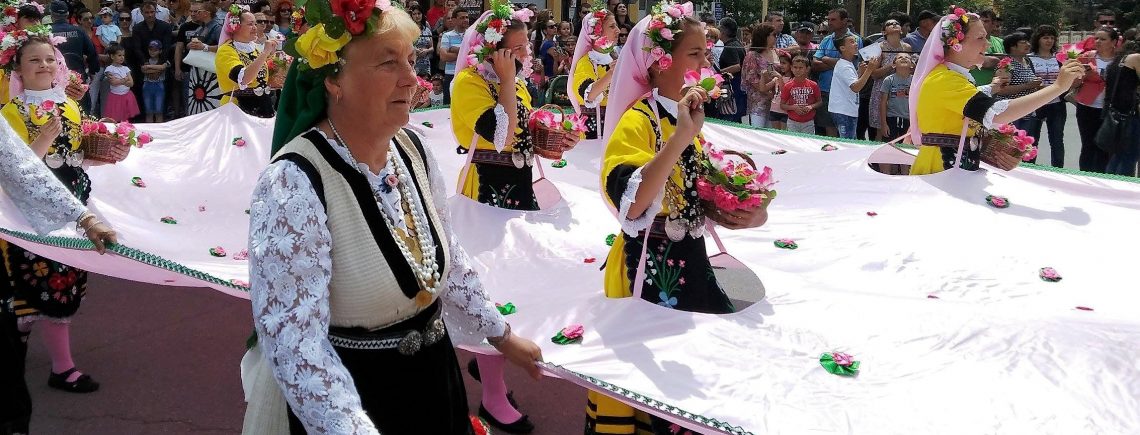
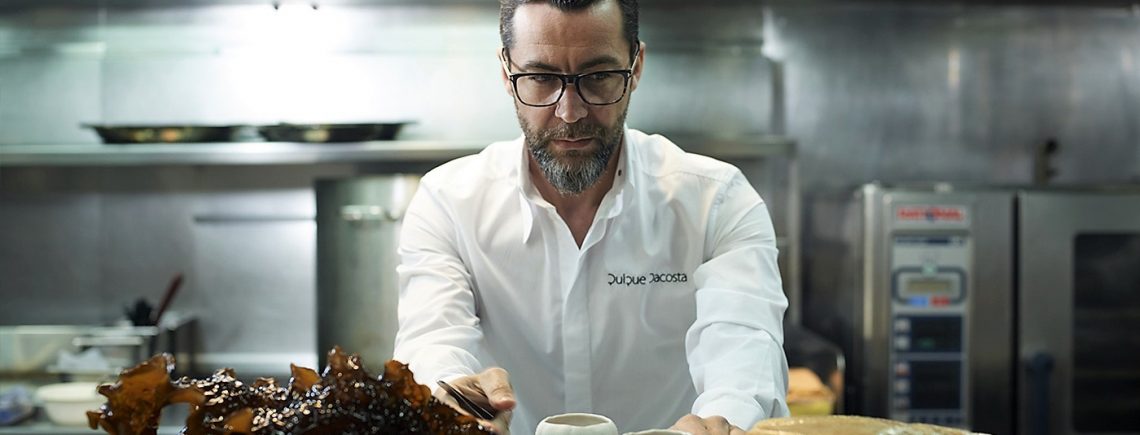
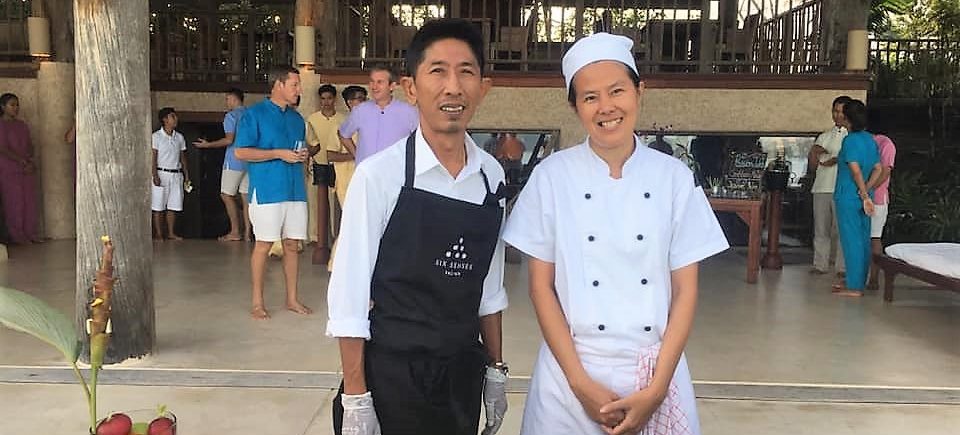
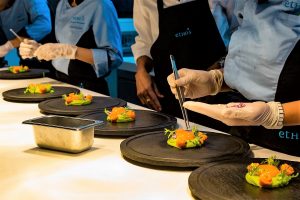
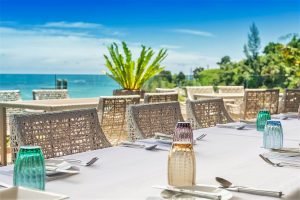
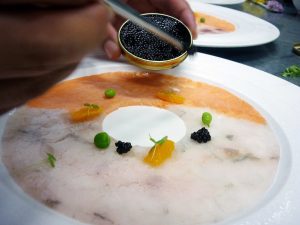
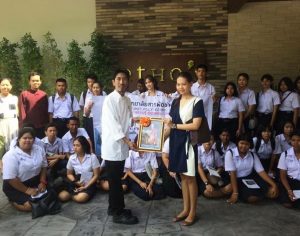
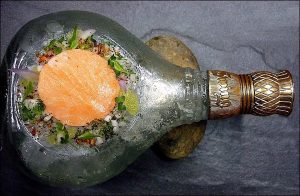

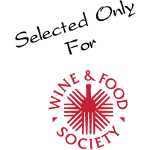

Recent Comments